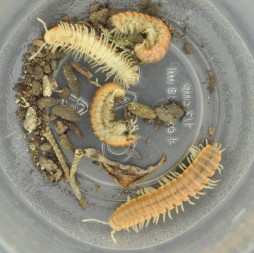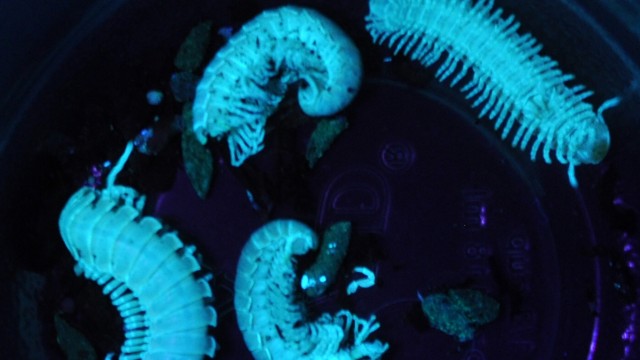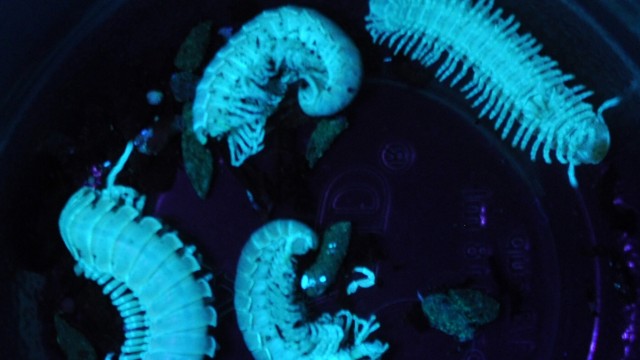A periodic nighttime census for rats on Alcatraz Island took an unexpected twist in February when surveyors from the National Park Service and UC Davis discovered glowing millipedes on the island.
To identify rats, National Park Service staff routinely place bait in feeding stations. The bait is laced with a non-toxic fluorescent dye that ends up in urine stains and feces. Surveyors later scan the grounds at nighttime with black light. The more glowing they observe, the larger they extrapolate the rat population to be.
A recent February search turned up no evidence of rats. Instead, surveyors were surprised to discover millipedes glowing intensely white. To ensure that the millipedes hadn’t munched on the fluorescent rat bait, a researcher at UC Davis cast a black light over a collection case at the university’s Bohart Museum of Entomology. Preserved millipedes from the same scientific family fluoresced in the case as well.
Some millipedes species are known to fluoresce under black light [VIDEO], but National Park Service officials say it is the first recorded evidence of such millipedes on Alcatraz. UC Davis entomologists are hard at work determining whether the millipede is a known subspecies of Xystocheir dissecta (Wood) the species commonly found around San Francisco Bay.

Alcatraz Island is far enough from the mainland for a new species to evolve, though it would take millennia for that to happen.

